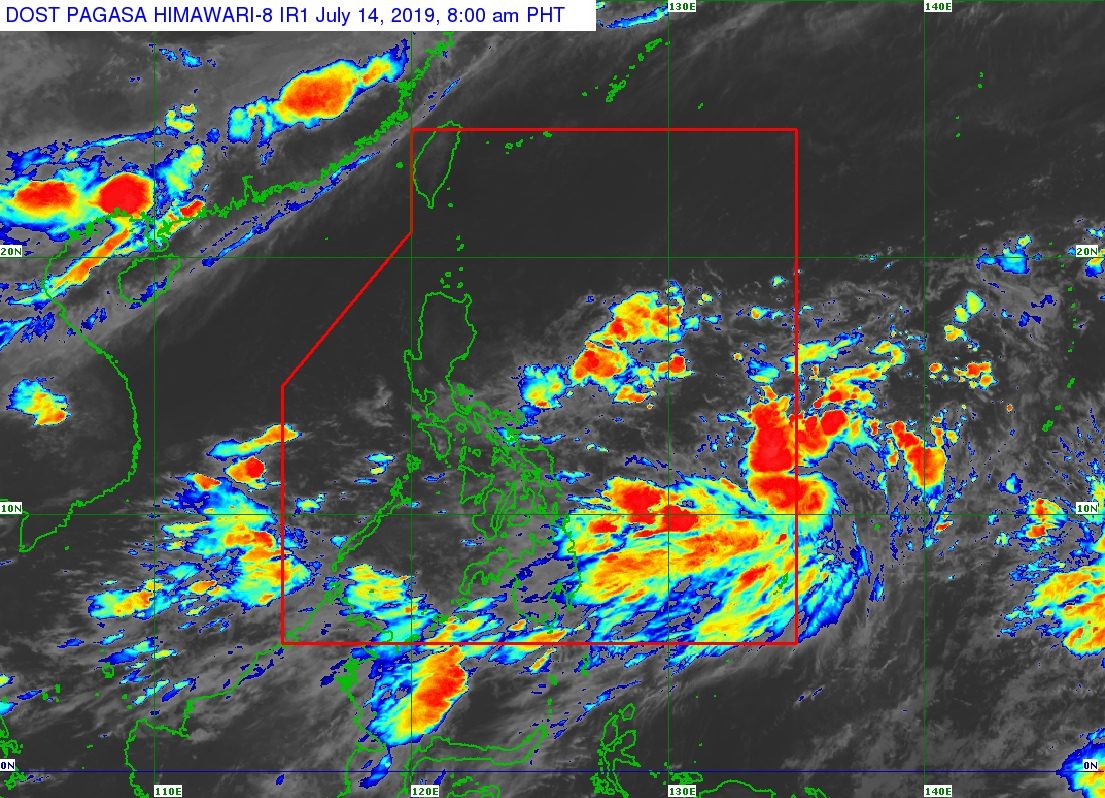SUMMARY
This is AI generated summarization, which may have errors. For context, always refer to the full article.

What’s the weather like in your area? Report the situation through Rappler’s Agos or tweet us at @rapplerdotcom.
MANILA, Philippines – The trough or extension of a low pressure area (LPA) outside the Philippine Area of Responsibility (PAR) is now expected to affect much of the country, including Metro Manila.
In a Facebook Live video past 4 am on Sunday, July 14, the Philippine Atmospheric, Geophysical, and Astronomical Services Administration (PAGASA) said the LPA is already 1,345 kilometers east of the Visayas.
It is expected to enter PAR either Sunday night or before dawn on Monday, July 15.
But the trough of the LPA has already been bringing some rain the past 3 days – mostly to Mindanao and the Visayas – even though the LPA itself is still outside PAR.
On Sunday, scattered rainshowers and thunderstorms are expected in:
- Metro Manila
- Calabarzon
- Bicol
- Mimaropa
- Visayas
- Mindanao
Flash floods and landslides are possible in those areas.
PAGASA Weather Specialist Gener Quitlong said the LPA appears unlikely to make landfall, but this scenario could still change since the weather system remains far from land.
The LPA might also develop into a tropical depression on Tuesday, July 16.
If it becomes a tropical depression inside PAR, it would be the Philippines’ 6th tropical cyclone for 2019 and would be given the local name Falcon. (READ: LIST: PAGASA’s names for tropical cyclones in 2019)
The potential tropical depression is also expected to enhance the southwest monsoon or hanging habagat.
At the moment, the southwest monsoon is still temporarily weak – a period called a monsoon break. The monsoon break has been ongoing for more than a week. (READ: FAST FACTS: Tropical cyclones, rainfall advisories)
The Philippines gets an average of 20 tropical cyclones annually, but since 2019 is an El Niño year, only 14 to 18 tropical cyclones are expected.
Below is the estimated number of tropical cyclones from July to December:
- July – 2 or 3
- August – 2 to 4
- September – 2 to 4
- October – 2 or 3
- November – 1 or 2
- December – 0 or 1
PAGASA declared the start of the rainy season last June 14. – Rappler.com
Add a comment
How does this make you feel?
There are no comments yet. Add your comment to start the conversation.